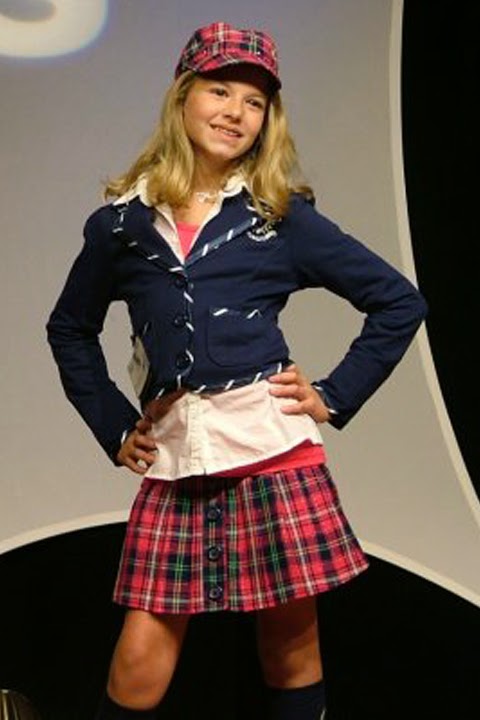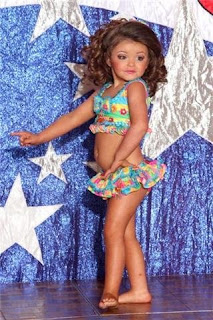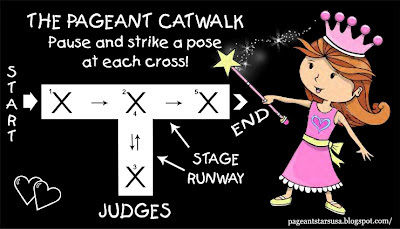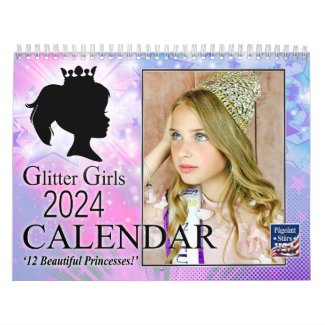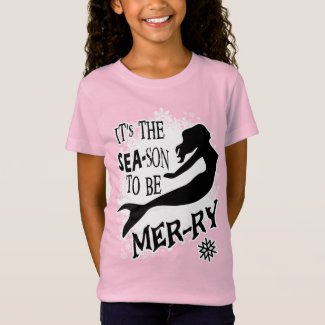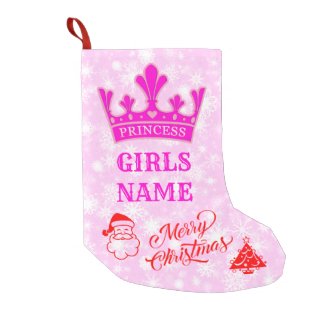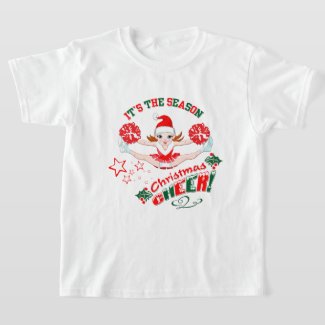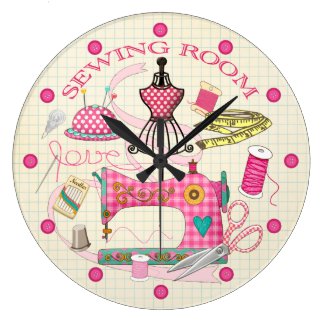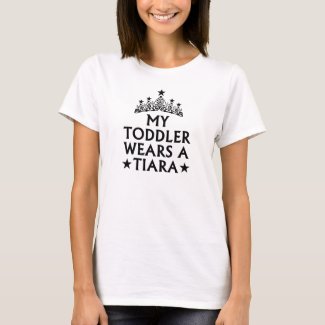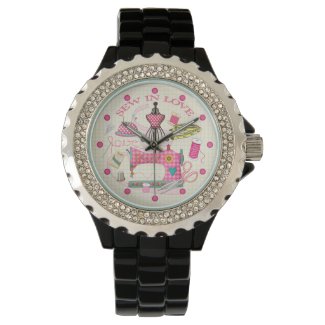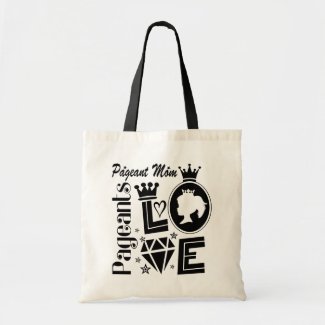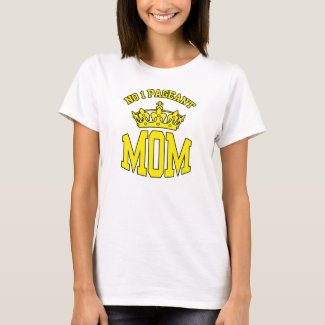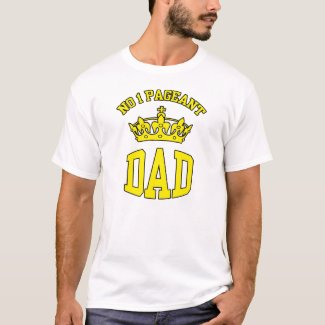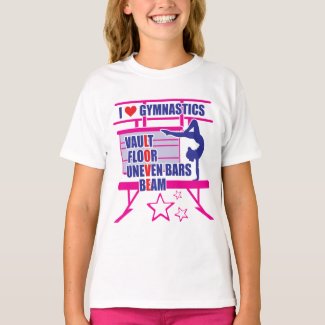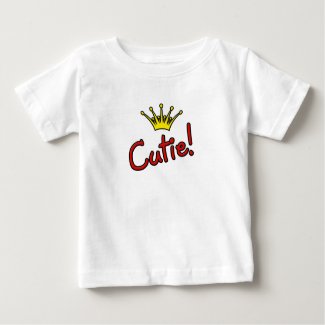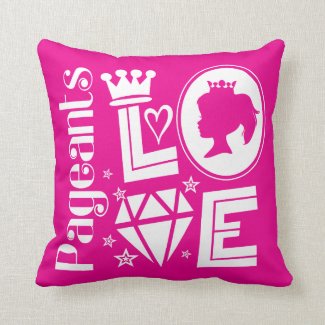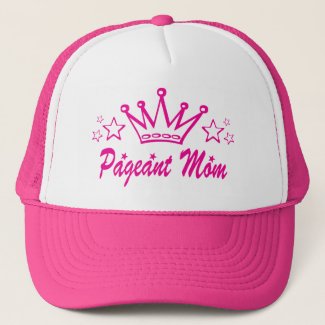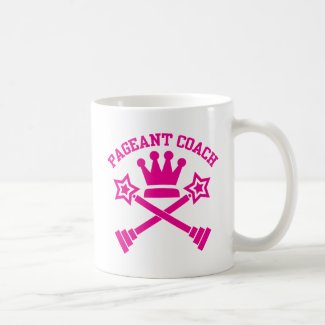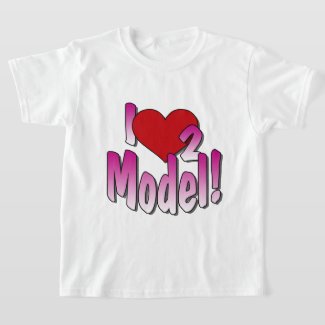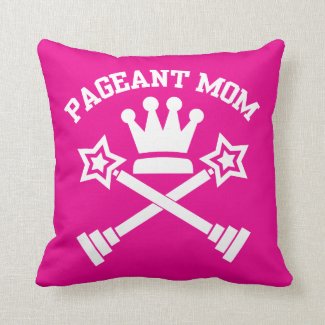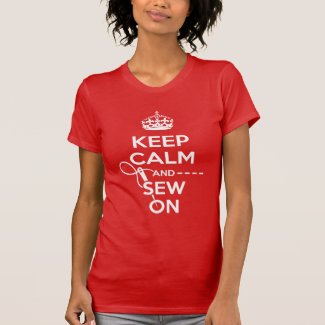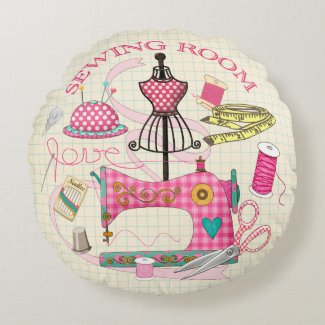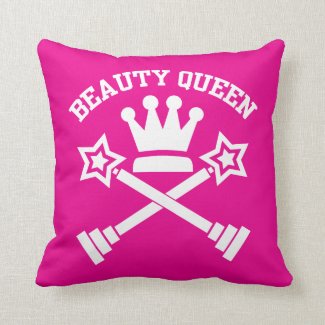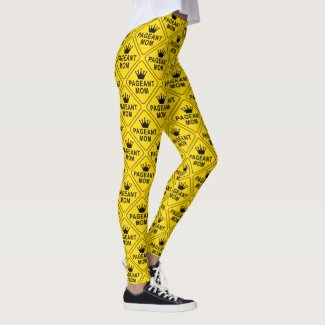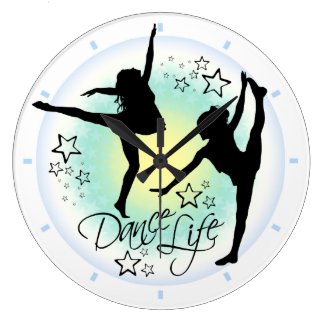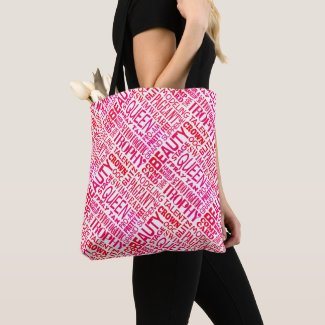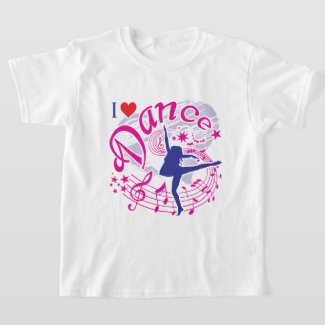 |
| Girls have been enjoying pageants for almost 50 years! |
Beauty pageants started in America in 1921, when the owner of an Atlantic City hotel struck upon the idea to help boost tourism. Before the child beauty pageant emerged, there were Most Beautiful Child contests held in major cities across America. The Little Miss America pageant began in the 1960s at Palisades Amusement Park in New Jersey. Originally, it was for teenagers 13-17, but by 1964 there were over 35,000 participants, which prompted an age division. What is now recognized as child beauty pageants did not emerge till the late ‘60s, the first one was held in Miami, Florida. Since then, the industry has grown to include nearly 25,000 pageants. It’s an increasingly lucrative business, bringing in about a billion dollars a year.
When we say something is beautiful, we are subconsciously recommending it to others that they should take delight in it. The word ‘pageant’ literally means ‘a brilliant parade or show of persons in spectacular costume.’ A ‘beauty pageant’ is therefore ‘a brilliant parade or show of beautiful persons in spectacular costume.’ And by this definition alone, every contestant at a beauty pageant is beautiful!
The characterization of a person as ‘beautiful’, whether on an individual basis or by community consensus such as a panel of judges, is often based on some combination of Inner Beauty, which includes psychological factors such as personality, intelligence, grace, politeness, charisma, integrity and congruence, and Outer Beauty, (i.e. physical attractiveness) which includes physical factors, such as whatever you perceive it to be. In other words, beauty in the eye of the beholder! Standards of beauty are always evolving, based on what a culture considers valuable. Historical paintings show a wide range of different standards for beauty. However, humans who are relatively young, with smooth skin, well-proportioned bodies, and regular features, have traditionally been considered to be the most beautiful throughout history.
The object of a child Glitz pageant is for the contestant to enhance their Natural Beauty to create a polished appearance of almost ‘doll like’ perfection. For girls partaking in glitz pageantry, spray tans, hair and makeup is not an option it is a requirement, along with false eyelashes, and false nails. Girls with missing front teeth sometimes wear false teeth called flippers, which enable the child to achieve that perfect glitz smile. All this enhanced beauty means that a naturally pretty girl who wins at natural pageants might not necessary win at a glitz pageant if she has not fulfilled the glitz requirements. Glitz beauty is therefore all about working with ones Inner Natural Beauty and to enhance their Outer Natural Beauty to thus create an overall artistic impression or interpretation of ‘Glamorous Beauty’ befitting to any professional talent stage show.
ULTIMATE BEAUTY
Pageant Beauty whether natural or glitz is not just about the way a girl looks! While a girl can achieve Inner beauty in her character and Outer Beauty in her appearance, she may not achieve ‘Ultimate Beauty’ unless she can achieve a high standard of ‘elegance’ and to do this she needs to have poise. Not that long ago, every well-bred young girl was schooled in deportment and taught lessons in poise, but theses days poise training is mainly reserved for pageants and finishing schools. A poised girl has elegant mannerisms. The way she walks and carries herself is fluid and gentle. Her movements of her body have a style that is not hasty or hurried, not aimless or without composure, but a deliberate legato of rhythmical grace. Correct posture is at the very heart of poise and as such it plays a big part in the visual element of Pageant Beauty.
THE LOOK
The main difference between ‘glitz’ pageantry and ‘natural’ pageantry is the use of prosthetics; fake hair such as wiglets and falls, fake teeth, called flippers, false eyelashes, and false nails etc, all of which are allowed and often considered essential attire for a glitz pageant. The dresses, swimwear, and other pro-am outfits worn by contestants in glitz pageants have a much more greater ‘Wow’ factor than those usually worn at natural pageants. Glitz dresses are positively saturated with sparkling sequins, beads, swarovski stones and rhinestones while natural pageant dresses are flower or Sunday dresses.
When it comes to make-up, there is very little difference between the two types of pageant. Contrary to popular belief, most natural pageants do allow make-up! This is because under the lights of the stage, little natural faces look ‘washed out’. Some do have rules regarding how much make up a contestant may wear, but the rules are often vague such as: ‘Make-up is allowed on contestants age three and up, but please keep the child looking their age’. A glitz pageant has no such rules and as such the free expression of make-up, prosthetics and sparkling costumes all combine in an artistic interpretation of perfect princess beauty resembling 'doll like' perfection. Hair and make-up can typically take between half hour to an hour to do.
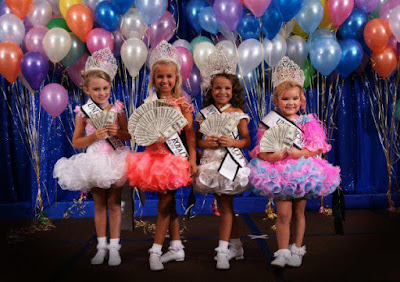 |
| Crowns, Sashes, Trophies and Prize Money can be won at a pageant |
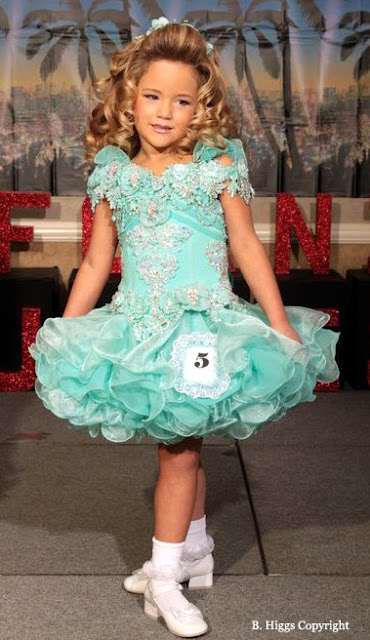 |
| A beautiful contestant wearing a Glitz Cupcake dress adopts the Model T stance known as 'Pretty Feet' |
BEAUTY/FORMAL WEAR
The Beauty/Formal wear competition is considered the most important part of any pageant and is where the girls can truly sparkle like royal princesses. Girls perform a graceful refined routine in a ‘T’ formation in order to show their beauty, hair and of course their dress as well as their smile, poise and eye contact with the judges. The Beauty competition is usually where the most points can be earned adding to the contestants overall score. Cupcake dresses are worn up to the age of ten or eleven and are absolutely immaculate, decorated in rhinestones and other embellishments including silk flowers, lace and woven trim, and bead work etc.
Cupcake dresses are the basic glitz dresses. The skirt and bodice are usually separate. This makes them much more adjustable. The cupcake dress is so named because of its many layers of ruffled skirts piled up on top of each other to resemble a cupcake. If a cupcake dress has seven layers it is then called a ‘Full Southern’. Contestants over the age of ten or eleven (depending upon their bust/hips development) usually compete in longer styled dresses.
One very important part of beauty is when contestants should, when standing on the spot, adopt the ‘Pretty Feet’ stance also called the ‘Model T’. This stance mimics the first position of ballet. The heel of the foot in front touches the inside arch of the other foot forming a ‘T’. The hands are held out with straight elbows, and if the cupcake dress fits perfectly, the fingertips just reach the edge of the skirt. White ‘Mary Jane’ shoes and white anklets decorated with lace, bows or ribbons, completes the classic princess beauty look.
This part of a pageant is basically a runway contest where the girls parade or ‘catwalk’ in front of the judges showing off their modeling skills. Contestants mostly wear casual off the rail outfits that would not look out of place if worn down the high street. Some pageants call this part of the competition, 'Sportswear'. It is not to be confused with outfits worn at a gym or on the sports fields. Depending upon the pageant, girls might be asked to wear a T.Shirt with shorts or skirt and tennis shoes, while others might expect their contestants to be dressed in more smarter attire. Sometimes the modeling competition might have a theme like the ever popular patriotic ‘Red White and Blue’, or a theme reflecting retro styles from past fashions such as ‘Rock and Roll 1950s’ or ‘Swinging 1960s’ etc.
SWIMWEAR
Almost every glitz pageant includes a swimsuit competition which in itself is very much like the modeling competition. The girls show off their costumes, smiling and making eye contact with the judges. Sometimes depending on the pageant, a choreographed routine might be performed. Contestants can choose to wear either one piece or two piece bikini swimwear, but glitz swimwear, as one would expect for a glitz pageant, is enhanced with frills, bows and ribbons, and is often embellished with sequins, swarovski stones and rhinestones etc.
The cowgirl costumes of Western Wear are the absolute pinnacle of pageantry. Western wear routines reflect the days of the Wild West and anything to do with the cowboy/girl and rodoe tradition. The music too should relate to a western theme. One important move incorporated into a Western Wear routine is the ‘Rip Off’. This is when part of the costume, usually a jacket, cape, hat, scarf or skirt, is removed during the routine and is used as a prop.
Pro-Am is the most outrageous and flamboyant part of any pageant and is there to ‘wow’ the judges. The costumes worn are highly imaginative, brightly colored and shiny incorporating layers of ruffles and mesh etc. They are usually highly decorated with such embellishments as sequins swarovski stones, rhinestones, beading, feathers, silk flowers, or anything else that one could use to enhance the outfit. Pro-am pageant routines are inventive in style often combining, upbeat walking with embellished turns, arm movements, sidesteps, the all important 'Rip Off' move, and some cheer and dance moves with a quick series of poses performed as though modeling for a fashion magazine. These include, hand and head gestures like ‘Oohs and Aahs’, 'Face Pouting', all performed to very high-energy music.
Pro–Am is also the term short for Professional–Amateur, and is a concept that describes a blurring of the distinction between professional and amateur in sporting competitions. Those people who are at a highly competitive, professional and strongly skilled level, but are not paid, are often called Pro–Ams.
The Talent part of the pageant is where the contestants can show off their unique abilities, which could be anything! Singing, dancing, baton twirling, reciting a poem or monologue, playing a musical instrument, or even performing magic tricks are just some of the many various talents one might encounter during the Talent section. The costumes worn should always reflect the theme of the routine. For instance a ‘Shirley Temple’ routine of the song ‘On The Good Ship Lollipop’ might see the girl dressed as Shirley Temple wearing a red polka-dot dress, or perhaps wearing a costume that looks like a candy assortment.
 THEME WEAR
THEME WEAR
 THEME WEAR
THEME WEAR
Pageants often include a special Theme Wear section which gives contestants another great opportunity to be imaginative with their costumes and routines. The list of themes is endless and could be anything such as, Country, Las Vegas , Ancient Times, Wild West, Hollywood
Pageant Age Divisions and Titles
Most people would agree that it would be very unfair to compare and judge the beauty of say a seven-year-old girl against that of an older girl say in her teens. Apart from the obvious age differences in looks there is the difference in girlhood by way of general life experience and ability. A younger child might not feel confident competing against someone twice or more her age and likewise an older girl might feel uncomfortable competing against children much younger than herself. To overcome this pageants operate a simple age division system which keeps the competition as fair and equal as possible. Age divisions can vary from one pageant to another and can include a range of differing years.
EXAMPLES OF PAGEANT AGE DIVISIONS
Infant Miss 0 - 12 Months
Baby Miss 12 - 24 Months
Toddler Miss 2 - 3 ½ Years
Tiny Miss 3 ½ - 5 Years
Little Miss 5 - 7 Years
Junior Miss 7 - 10 Years
Pre Teen Miss 10 - 13 Years
Teen Miss 13 - 16 Years
Miss 16 - 18 Years
TITLES
Titles such as 'Prettiest Hair', 'Prettiest Eyes', 'Prettiest Dress', etc are awarded in each age division and are awarded to ensure most contestants go home with a crown, but there can only be one divisional 'Queen' title which is awarded to the girl with the highest score of her division. If a girl has not won divisional Queen, it is not over there as she may be in line to win the highest pageant title 'Grand Supreme Queen'. The 'Grand Supreme Queen', is the title everyone wants to win as it is awarded to the girl who has achieved the highest overall score of all the girls competing in the pageant and is therefore the overall pageant winner! However, depending on the pageant, a divisional Queen can sometimes win Grand Supreme Queen if the pageant 'Double Crowns'.
Other Pageants Girls Can Enter!
Natural and Glitz are the two main pageant classifications, but in the world of pageantry there are many more different types of pageant that girls like to enter.
SEMI-GLITZ PAGEANTS
These pageants are just a toned-down version of a full glitz pageant. The pageant dresses are not quite as fancy, and the hairdos are not as big or elaborate.
TITLE PAGEANTS
Title pageants can be either semi glitz or natural, so make sure you read and follow the requirements and rules. They don't want glitz routines, just basic modelling skills. They usually do not allow flippers, but often allow professional hair and makeup. They allow any type of pageant dress and some allow ballgowns. They do not allow custom music, but have their own background music for all the contestants while on stage. These pageants vary so always read and follow the guide lines of the pageant.
NATURAL UNIFORM SWIMSUIT RUNWAY PAGEANTS
These are pageants similar to Title Pageants that require only modelling skills. Contestants often compete on a catwalk in a variety of their own fashion outfits, and a plain one-piece swimsuit supplied for each girl by the pageant system to get a 'uniform look'. The swimsuit section is usually where most points are to be gained. Some allow hair and makeup, but no glitz! So read the rules!
FACE PAGEANTS
A face pageant speaks for its self. The judges are only interested in the contestant's face, usually without makeup, or with light makeup. Personality is sometimes judged, but rarely is the contestant's stage walk or poise etc. The contestant is usually called in front of the judges and asked a few simple questions.
SCHOLARSHIP PAGEANTS
These can be glitz, semi-glitz, or natural. With most scholarship pageants, the older contestants must have a platform - a cause they believe in. They must go through an interview and sometimes have to give an on stage speech. They are also usually asked a question on stage.
CO-ED PAGEANTS
These pageants are for both males and females. Girls and young ladies of all ages may usually enter, but only little boys under six-years are usually allowed.
SUNDAY BEST PAGEANTS
These are very basic natural pageants requiring the girls to wear a cute dress that would be suitable for church or to wear at a dinner etc. Nothing too fancy! The pageant requires basic modelling skills and no glitz routines!
PHOTO PAGEANTS
Photo pageants are an inexpensive and fun way to enter into the world of pageantry. Most photo pageants are held online and have categories for glitz photos and for natural photos, along with categories for boys and girls of different age groups.
SEMI-GLITZ PAGEANTS
These pageants are just a toned-down version of a full glitz pageant. The pageant dresses are not quite as fancy, and the hairdos are not as big or elaborate.
TITLE PAGEANTS
Title pageants can be either semi glitz or natural, so make sure you read and follow the requirements and rules. They don't want glitz routines, just basic modelling skills. They usually do not allow flippers, but often allow professional hair and makeup. They allow any type of pageant dress and some allow ballgowns. They do not allow custom music, but have their own background music for all the contestants while on stage. These pageants vary so always read and follow the guide lines of the pageant.
NATURAL UNIFORM SWIMSUIT RUNWAY PAGEANTS
These are pageants similar to Title Pageants that require only modelling skills. Contestants often compete on a catwalk in a variety of their own fashion outfits, and a plain one-piece swimsuit supplied for each girl by the pageant system to get a 'uniform look'. The swimsuit section is usually where most points are to be gained. Some allow hair and makeup, but no glitz! So read the rules!
FACE PAGEANTS
A face pageant speaks for its self. The judges are only interested in the contestant's face, usually without makeup, or with light makeup. Personality is sometimes judged, but rarely is the contestant's stage walk or poise etc. The contestant is usually called in front of the judges and asked a few simple questions.
SCHOLARSHIP PAGEANTS
These can be glitz, semi-glitz, or natural. With most scholarship pageants, the older contestants must have a platform - a cause they believe in. They must go through an interview and sometimes have to give an on stage speech. They are also usually asked a question on stage.
CO-ED PAGEANTS
These pageants are for both males and females. Girls and young ladies of all ages may usually enter, but only little boys under six-years are usually allowed.
SUNDAY BEST PAGEANTS
These are very basic natural pageants requiring the girls to wear a cute dress that would be suitable for church or to wear at a dinner etc. Nothing too fancy! The pageant requires basic modelling skills and no glitz routines!
PHOTO PAGEANTS
Photo pageants are an inexpensive and fun way to enter into the world of pageantry. Most photo pageants are held online and have categories for glitz photos and for natural photos, along with categories for boys and girls of different age groups.
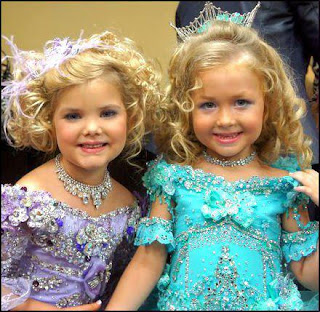 |
| Pageant Friends Eden Wood and Mia Spargo |
Child Beauty Pageants are an occasion for collaborative celebration of child beauty! They give children the chance to individually shine and perform in an array of beautiful dresses and bright stylish costumes, which if worn elsewhere would be out of place. The physical attractiveness of an individual is irrelevant when faced with a line up of naturally beautiful children. However, ‘Pageant Beauty’ is judged on the overall package, the presentation, the charm and confidence of personality, and above all the way the contestant carries herself off while observing and keeping to the set guidelines of pageantry. Therefore with this in mind ‘Pageant Beauty’ is a fun artistic skill, which like any other talent can be taught and refined to a high standard of ability.
1. Beauty: This is facial beauty, along with first impression and wow factor.
2. Poise/Personality: This is how the girls walk and carry themselves, if they are smiling, do they appear to be enjoying themselves, eye contact with judges, and confidence.
3. Overall Appearance: This is the overall look meaning, have the girls chosen a good dress style, color, fit; is their hair nice and neat, is she the full package?
Reasons to Participate in Beauty Pageants
The most cited reason parents give for putting their children into beauty pageants is to boost their child’s self-esteem, as well as teach poise, public speaking skills, tact, and confidence. Ask any child why she competes in beauty pageants and she will most often answer:
‘Because it is fun! I get to dress up and be a princess, I win crowns and trophies and money and stuff, and I make new friends’.
It is for these reasons alone that child beauty pageants have stood the test of time to become an established pastime enjoyed by thousands of families across the United States and increasingly around the world. However, it is worth pointing out that beauty pageants are not for everyone! If your child doesn't want to compete in pageants, don't force her to do so! Judges can quickly recognise the tell-tale signs of an unhappy child who is not enjoying performing her pageant routines, and therefore score accordingly with a low score and she will not do well.
THE RIGHT ATTITUDE
Pageants should be for the child - not for the mom! It is important for pageant moms to have the right attitude about competing. It shouldn't be all about winning! Think of pageantry as a way to spend a fun day with your daughter, when she can be 'princess for a day'. See what pageant children say about pageants on the Pageant Life page.
THE RIGHT ATTITUDE
Pageants should be for the child - not for the mom! It is important for pageant moms to have the right attitude about competing. It shouldn't be all about winning! Think of pageantry as a way to spend a fun day with your daughter, when she can be 'princess for a day'. See what pageant children say about pageants on the Pageant Life page.
How Do I Start Doing Pageants? And What Do I Need to Compete?
So you are beautiful! Of course, every child is naturally beautiful and you would like to try out pageants, may be just to do one or two to see if you like them. This is of course how most girls start their introduction into the world of pageants. However, don't think that just because you are pretty that you can put on a beautiful dress and win a beauty pageant, that is not what beauty pageants are about! Pageants are about how to work with your beauty and how to show it in a competitive situation keeping to strict guidelines and set rules. Just like any other competitive sport, pageants require a lot of time and money and loads of dedication to succeed. So with that in mind where do you start?
PARENTAL SUPPORT
You must start first with your parents because you can't do pageants alone! You will need to have the support, help and guidance of your parent/s otherwise it just won't happen for you. Some parents are very reluctant to allow their daughters to do pageants for they see it as over the top extravagance and somewhat exploitative, which is sad because with the right positive attitude, pageants can be a lot of fun and greatly rewarding for both child and parent/s.
RESEARCH
The best tool to get you started into pageantry is at your finger tips, and that is your computer! The Internet is a great source of information and you must research every thing you can about competing in pageants! Parents can obviously do the research for younger children but there is no reason why older children should not also help with the research for you will need to know as much as you can. Start by reading everything on our website! Look on you tube and watch our selection of chosen movies on our 'Your Pageant Videos page' By watching other children's pageant routines you will soon gain knowledge. The more you know about pageantry the greater understanding you will have about how pageants operate and what you can expect and need to do.
TALENT AND ROUTINES
Think about your talent/s, which could be anything such as dancing, gymnastics, singing, or playing a musical instrument etc. You will need to be really good at your talent and it would therefore be advisable to have extra lessons! Whatever your talent, practice it and refine it to a good standard worthy of a performance. Make up for yourself your own routines and practice them. Practice makes perfect and you will need to be princess perfect with all your routines!
COACHING LESSONS
Get some proper coaching lessons from a pageant or modeling coach. You will need to learn how to model and walk on stage and learn the art of poise. Even very young girls will need to learn 'cutesy' and things to do on stage. A coach can also help with advice on hair styles and dress and be an all-around great source for advice. With dedication and hours of practice you will be ready for your pageant!
FIND A PAGEANT
Look up pageants on the Internet to find out which ones are near to where you live. It is a good idea to start your introduction into pageantry by signing yourself up at some local pageants first. You want to get plenty of experience in before you do the big city pageants! As you make your way up to bigger pageants your confidence will grow.
ENTRY PHOTOS
Once you have signed up for a pageant it's time to get your photos ready! It is best to have your photos taken by a professional photographer as they have all the lighting equipment etc and skills needed to give you the right image you need. Take along a number of various outfits and costumes but also check to see if the photographer can supply any other outfits for your shoot.
ESSENTIAL PAGEANT ATTIRE
Getting the right pageant attire for the pageant is crucial. Follow the rules and any advice from the pageant to get a clear idea of what you need for the competition. You will need to get everything planed and ready well in advance of your pageant. You will generally need:
BEAUTY DRESS
Girls competing in beauty pageants will need to have a beautiful dress which is appropriate in style and theme of the pageant. For Glitz Pageants, girls under the age of eleven, should wear a short dress with a full cupcake skirt and a lot of stone embellishments, and for natural pageant a babydoll or flower dress. If she's eleven or over, she'll need a ball gown with a full skirt. The teen division starts at thirteen, and these girls usually wear embellished mermaid-style dresses or either ball gowns with a skirt that's not so full. Depending on the type of pageant and the age of the contestant, girls wear a variety of different dress styles for competitions.
JEWELRY
All jewelry worn needs to complement and go with the dress, but on no account be so over the top as to distract from it. Little girls usually wear a simple pair of stud earrings made from one Swarovski stone, while older girls will often wear a pair of cluster earrings or a pair of dainty dangling earrings made up of Swarovski stones. Most little girls wear a lace choker that is dyed to match the dress and adorned with stones, though a choker is not needed for a Halter neck dress. Older girls tend to wear necklaces made of Swarovski stones.
HAIR ADORNMENT
A hair bow which matches the dress and which is embellished with Swarovski stones, feathers, butterflies, etc is essential attire for any pageant, but it should not be overpowering. Some girls wear silk flowers the same color of the dress that have been embellished with stones and glued to a hair clip. Girls competing in the 10-12 division need a barrette that's adorned with Swarovski stones.
HAIR AND MAKEUP
Anyone competing in a Glitz pageant will need to have a wiglet or fall. The best ones are made from real human hair and give excellent results. A color chart is a good tool to find out which hair shade matches your hair. Girls usually have there hair and makeup done at the pageant by professional hair and makeup stylists. Fingernails and toenails will also need to be painted! You will need false nails and eyelashes if you are competing in a Glitz pageant!
FLIPPER
For Glitz pageantry girls usually wear a flipper which is basically a false mouthpiece that fits over the child's top teeth to give the appearance of perfectly straight, dazzling white smile. You can find them online, or you can ask your pageant coach about where to find one from a reputable source.
FOOT WEAR
Little girls in short dresses need plain white Mary Janes with a matte finish. These should be worn with white lacy ankle socks. Girls in the 10-12 age division need a pair of clear, open-toed shoes to wear with their ball gown. Most girls choose a shoe with a 3 or 4-inch chunky heel. The height raises the gown and the chunky heel gives the girl more stability when walking.
NUMBER PIN
When girls enter the pageant, they are issued with number on a piece of paper that has to be pinned to her dress. The pageant staff will provide a straight pin for this purpose. This is fine, but a crown pin will look more professional.
OUTFITS AND COSTUMES
There are a number of different sections in a pageant and depending on the pageant you will need to have several different outfits, - one for each section. You may need Swimwear, Western Wear, Pro-Am, Modeling and so on.
ALL OVER TAN AND PERFECTLY POLISHED
Lastly, depending on which type of pageant you are entering, you may if you are a Caucasian girl need to be tanned. This is because the stage lights will make white little faces looked washed out. It is always advisable to have this done professionally at a tanning salon. Older girls will of course need to do the waxing/shaving thing especially if they have dark hair and are competing in swimwear. Sometimes even younger girls have the downy hair on their legs removed to give that perfect polished smooth look. Eyebrows will also need to be shaped!
SUMMING UP
All the above is what you will need to get and to do, in order to make your start into the fun glitzy world of pageantry. There are still other things like your pageant portfolio to consider and what you need to pack and transport your clothes in etc, but essentially that is it. Above all you need dedication and a will to do pageants. Pageants are expensive, but costs can be kept low by purchasing second hand pageant clothes, or making your own. Once you know how to act and present yourself on stage you will be less likely to need a coach and the same goes with your talent lessons. Many girls try pageants and find it's not for them, yet good for them that they gave pageants a try! Most girls find it a rewarding and a fun experience which gives them confidence and many other life skills too! Some lucky ones even gain modeling or acting work! However, the main focus should be on a fun and a positive outlook, making friends and handling good sportsmanship! You will not necessary win your first pageant, and therefore it is important to congratulate the other girls and be happy for them! The next time you do a pageant you might win and then it will be your turn to be congratulated! Good Luck and Happy Pageantry!
Choosing a Dress For Beauty
If you are new to child beauty pageants you will undoubtedly find that one of the most confusing things about pageants is what type of dress to wear for competition. Choosing the right type of dress is essential if you want to do well at pageants. There are many different kinds of dresses available, but it is all important to get the right dress for you and to do this depends on two main factors. One the type of pageant you intend to enter. And two, your age. It is always advisable first to find out about the pageant you are entering, the rules and what they are expecting to see you in. It should be remembered that a contestant will be marked down by the judges for wearing the wrong type of dress, (or for that matter jewelry, hair and makeup etc, too much or too less) so it cannot be stressed enough that you should always follow the rules and guidelines of the pageant you are entering. For a Full Glitz pageant your dress must be very embellished with sparkly swarovski stones etc. For a Natural pageant your dress should have little or no sparkle with very few embellishments. For a Semi Glitz pageant your dress should be somewhere in between (a toned down glitz). There are a variety of different dress styles for pageant competitions and these include:
CUPCAKE: dresses are
the basic glitz dresses for girls up to age ten or eleven (depending upon a
girls development) and comprises of a short ruffled skirt and highly embellished
bodice. The skirt and bodice are
usually separate which makes them much more adjustable. The cupcake dress is so
named because of its many layers of ruffled skirts piled up on top of each
other to resemble a cupcake. If a cupcake dress has seven layers it is then
called a ‘Full Southern’.
PEEK-A-BOO: dresses are
similar to a pencil skirt but have an outer 'half cupcake' ruffled skirt which
runs around the back leaving the underskirt at the front on show. The bodice is
the same as a cupcake and like the bodice, the underskirt is sometimes decorated
with embellishments. Good for semi-glitz but not really recommended for glitz. In
fashion, Peek a boo is a term used for any style of garment which is decorated
with embroidered holes (Open work), or any see through material like lace or organza
etc.
BABYDOLL: dresses have an 'empire' waistline (just under the
nipple level) and are usually all one piece. Babydoll dresses are very common
for natural pageants in the under five set, and can be used for semi-glitz, depending
upon the pageant.
CINDERELLA: is a generic term for any long style dress with
a full maxi or midi skirt length. A maxi length goes all the way to the mid
calf or lower. A midi skirt has the hem about knee length. A mini skirted
length is generally regarded as a hemline about mid thigh or higher. A mini
skirt with the hemline at the crotch is called a micro-mini.
HIGH LOW: is a style of dress which has a shorter hem in the
front of the dress and a longer hem at the back. Some are beautifully designed
with long ruffled skirted trains. Depending upon the pageant these dresses are mostly worn by
girls over ten years old.
BALL GOWN: has a bodice with a skirt that spreads wide to
cover the contestants legs modern
ball gowns have petticoats or a crinoline often constructed of several layers
of stiff net to make a fuller skirt. Teenagers tend to wear ball
gowns with a less fuller skirt.
MERMAID DRESS: is a long elegant dress that comes in at either
the thighs or knees and flares out to the floor, as to resemble a mermaid's
fish tail. They should only really be worn by girls from age thirteen and over
with a fuller bust.
FLOWER DRESS: is a generic term applied to dresses
that one might wear to a formal occasion like a wedding or communion, garden
party etc. Such flower dresses worn with understated jewelry are ideal for most
natural pageants.
Swimwear Competition - Choosing a Swimsuit
SWIMWEAR FOR NATURAL PAGEANTS: For natural pageants you need to stand out but this is much harder than you might think as your swimsuit style is likely to be plain and rather ordinary, therefore you have to rely on your own confidence to project your personality. Your smile and the way you carry yourself off on stage is all important, but the style and color of your swimsuit can also enhance your personality and confidence. Choose a color that complements your skin tone and hair color. If you are feeling particularly confident you might like to opt for a high-cut swimsuit, or if you have a fuller bottom, a thong style swimsuit. Thong swimwear has a narrow strip of material at the back that goes up the crease of the bottom to show off ones naked butt cheeks. Such swimwear is very rarely worn in North American child beauty pageants, but it is sometimes worn by preteens and teens in
SWIMWEAR FOR NATURAL RUNWAY PAGEANTS: Natural Runway Pageants supply a plain color (usually black) stretchy, one-piece swimsuit for all the contestants in order to get a 'uniform look', hence the name. A Natural, Uniform Swimsuit, Runway Pageant is arguably the most difficult of all pageants to compete in as the you have to rely solely on your modelling and cat-walking skills to project your personality and beauty. With no or only a very small amount of makeup allowed (depending on the rules of the pageant) the wow factor comes from your own ability to command the stage with your stage presence, i.e. showing confidence, pageantry skills, professionalism, modelling skills and loving the moment. Your hairstyle, smile and the way you wear the swimsuit can also enhance your natural beauty and confidence and therefore add extra points to your score. Some girls like to make themselves stand out from the rest by lowering a shoulder strap or if the swimsuit runs on the small side and naturally rides up the butt cheeks, they pull the material up at the back and style it like a thong. However, pageants have different rules about swimsuit adaption so it is always advisable to read the rules and ask first. Natural, Uniform Swimsuit, Runway Pageants are notoriously difficult to judge, but at the end of the day it comes down to the Judges opinion and their combined scores. Don't get heart broken if you don't win the title, - you win some, you lose some! The 38 minute video below shows a typical Natural, Uniform Swimsuit, Runway Pageant. The girls show great stage presence and a truly wonderful attitude of pageant sportsmanship (Sports-princess-ship) by congratulating the winner, which is something every pageant girl must learn to do. Can you pick the winner?
Can you pick the winner of this Mini Miss Brazil
Natural, Uniform Swimsuit, Runway Pageant?
SWIMWEAR FOR GLITZ PAGEANTS: For glitz pageants don’t make the mistake of thinking you can run out to the shops and successfully buy a swimsuit off the rack the week before the pageant. You will be very disappointed when you arrive and see what the experienced contestants are wearing. You need to have a swimsuit that has been specially designed with embellishments and ruffles etc. There are various styles of swimwear available these days one-piece, bikini, monokini, tankini, etc, so you first need to decide what you want to wear. In recent times, bikinis have become more popular in pageants. In fact, some pageant experts feel that if you choose a one-piece swimsuit for competition, you are attempting to hide a flaw or you lack self-confidence. Unless your pageant requests a one-piece suit, consider a two-piece swimsuit especially for the juniors and up groups. What ever you decided, choose a swimsuit that is flattering, complements your skin tone and fits properly. By selecting the proper swimsuit and learning how to walk and pose correctly during competition, a contestant can gain valuable confidence and it will make you stand out from the crowd.
THE FIT: Whatever type of pageant you are entering it is
essential that your swimwear fits properly! A good fit is not loose but neither
is it so tight that the swimsuit cuts into the shoulder, arms, legs, back or bust.
A well fitted swimsuit should create a sleek look and mold shapely against the body
with no wrinkles. Avoid swimwear with the bottoms that look like shorts, instead choose a higher
fashionable cut that is traditionally flattering to the female body. The seat
should smoothly cover and support your bottom with no cheeks showing, that is
unless of course you are competing in thong swimwear. To prevent your swimsuit riding up and
showing your cheeks, some contestants like to use a product called Firm Grip, (Butt Glue) an aerosol
spray adhesive, to keep their swimsuit in place. If you choose this option
remember to lift the suit away from your skin, spray and then let the adhesive
dry a little before you put the swimsuit in place. It needs to become tacky
to work; otherwise the suit will just absorb it. For older developed girls the brassiere
part should not be so tight that the bust appears to be popping out. Always do
fittings with any padding you plan to use in the pageant! If it is your time of the month make doubly sure before going onto stage that your tampon string is hidden in your swimsuit and thus prevent any embarrassment!
 |
| Example of Pageant Swimwear. |
ADORNMENT: You need to decide what if any extras you wish to
wear. A matching hair adornment such as hair bows always looks great and is
highly recommended. You may also wish to complete the full package by wearing
an anklet, arm band, gauntlets or cuffs. Sometimes
contestants might choose to wear a matching sarong or a cape which they remove
during their routine thereby including the Rip-Off move.
THE BODY BEAUTIFUL: Swimwear competition is not just about the swimsuit, it's also about the body beautiful. One must bare in mind that there is no such thing as the perfect body. Everybody is different and we all come in different shapes and sizes. The key to any swimwear competition is showing confidence with the body you have. If you feel self-conscious on stage it will show so you will need to be at easy about competing in swimwear. One good way to overcome any self-consciousness is to wear your swimwear as much as possible; around your home and garden and in front of people. Most girls have a few swimsuits to hand, so have your friends and relations come over and put on a swimwear fashion show for them which will also be good practice for your modelling skills. Another good way to is to have a professional swimwear photo-shoot. Take along a number of swimsuits for the shoot and a few props like a beach ball, rubber ring, sun glasses, sarong and sun hats etc. Don't forget to add your best swimsuit photos to your portfolio! All of which will help you grow in confidence. Your skin is very important and should be kept clean, exfoliated and moisturized. If you are a Caucasian girl a suntan is essential
to help you create a winning image in the swimsuit competition. Traditionally a
suntan makes you look slimmer, healthier and more athletic. Intense stage
lighting washes out normal skin coloring so many contestants rely on a tan to
help them look better onstage. Always be safe in the sun! Remember there is a
risk of skin cancer from sun-tanning outside in the sunshine and if you do this
you should always apply a high factor sun lotion or cream! Most contestants choose to
use a spray tan. Many opt for the 'all over tan look', tanning their entire
body so to eliminate any danger of white tan lines showing. Lastly to achieve the confidence and body beautiful to compete on stage you will need to look smooth and perfectly polished. Theses days an accepted part of every girls daily beauty routine is the removal of body hair, from legs and underarms and this also includes pubic hair too. Girls (and sometimes boys), choose to wax or shave off their pubic hair for a variety of reasons; most feel more comfortable and cleaner while other reasons maybe because they wear a leotard for gymnastics, cheer or dance. However, when it comes to pageant swimwear competitions pubic hair is a big no no! There are no set rules about pubic hair removal but at any age an embarrassing visible dark triangle peering through thin Lycra material, or curls of unsightly pubic hair peeping out from your swimwear is not a good look and you may be deducted points for it! Therefore the general advice is simple: 'No pubic hair for swimwear!' If you need advice about how to shave off your pubic hair see our Girls Guide to Shaving or just ask your mom or older sister, if you have one, about how they remove their pubic hair. There are also many informative websites offering guidance and tutorials about this topic.
The scoring of swimwear can be different from one pageant to another and for
different age divisions. It really all depends on the pageant.
Therefore it is recommended you find out from the pageant you are entering what
they will be looking for in the swimwear competition. Swimwear might be scored
on any number of things which could include:
First Impressions and Wow factor
Beauty of face and figure
Well proportioned body
Good muscle tone
Poise, posture, carriage
Modeling skills
Proper swimsuit fit
Routine
Use of stage - Hitting each X mark
Confidence and eye contact
Energy and charisma
Overall presentation
Almost everyone participating in beauty pageants compiles a pageant portfolio of some form or another. Its primary purpose is to showcase the contestant’s pageantry and modeling skills by way of a photographic record and archive of achievement. It takes time and effort to build a good portfolio but that is all part of the fun. Serious contestants build a portfolio in order to have at hand something professional to show talent scouts and representatives of agencies in the hope of gaining modeling work etc. Assembling a pageant portfolio is one of the most important things you can do to make yourself look like an experienced professional within your field. Your portfolio is there to showcase your pageantry achievements, skills and experience and its purpose. An effective pageant portfolio should be a well rounded presentation of the pageants you've done, showcasing your accomplishments as well as an indication of your ability to handle other jobs in the entertainment industry, such as modeling, dancing, singing and even public speaking to name but a few. You should always keep your portfolio up to date and at hand. Always take it with you to pageants, or dance competitions etc, as there may be talent scouts in the audience on the lookout for new talent, models, etc.
 The presentation and layout of your pageant portfolio is very important! A quality leather bound binder with your name and date of birth on the cover is a very good way to present your portfolio package. Inside always use clear plastic pocket sleeves to present your work. Never punch holes in your photographs as this gives an untidy appearance. Your pageant portfolio should start first with your ‘Resume’, followed by your ‘Photographic Section’. To add an extra visual impact to your portfolio you should also include a ‘Comp Card and Graphic Section’.
The presentation and layout of your pageant portfolio is very important! A quality leather bound binder with your name and date of birth on the cover is a very good way to present your portfolio package. Inside always use clear plastic pocket sleeves to present your work. Never punch holes in your photographs as this gives an untidy appearance. Your pageant portfolio should start first with your ‘Resume’, followed by your ‘Photographic Section’. To add an extra visual impact to your portfolio you should also include a ‘Comp Card and Graphic Section’.
PAGEANT COMP CARDS
PRESENTATION
 The presentation and layout of your pageant portfolio is very important! A quality leather bound binder with your name and date of birth on the cover is a very good way to present your portfolio package. Inside always use clear plastic pocket sleeves to present your work. Never punch holes in your photographs as this gives an untidy appearance. Your pageant portfolio should start first with your ‘Resume’, followed by your ‘Photographic Section’. To add an extra visual impact to your portfolio you should also include a ‘Comp Card and Graphic Section’.
The presentation and layout of your pageant portfolio is very important! A quality leather bound binder with your name and date of birth on the cover is a very good way to present your portfolio package. Inside always use clear plastic pocket sleeves to present your work. Never punch holes in your photographs as this gives an untidy appearance. Your pageant portfolio should start first with your ‘Resume’, followed by your ‘Photographic Section’. To add an extra visual impact to your portfolio you should also include a ‘Comp Card and Graphic Section’.
RESUME
Your resume is the foundation of your pageant portfolio and should include your complete contact information, contact information for any agency representation you have, your hair and eye color, height and weight. and a biography that details your history in the modeling, entertainment and pageant industry, with specific focus on any pageant wins you have or titles you hold. Your pageant resume should also include any reference to any training you have, whether it is in dance, acting or singing etc. If you do not have any experience to list on your resume then write your goals and why you would be perfect for the role. Your resume should be professional and therefore all spelling should be correct before you distribute to casting directors.
PHOTOGRAPHIC SECTION
Your pageant portfolio should only showcase your best photographs which should be a variety of modeling photos that include natural, and glamour, and also live shots. Your ‘natural photos’ should capture you in natural everyday settings, indoors and out of doors, dressed in everyday attire such as casual wear, school wear, swimwear, etc. Your ‘glamour photos’ should show you in makeup, wearing everything from formal wear, to an assortment of eye catching costumes such as, Pro-Am wear, swimwear, dance wear, etc. Your ‘live photos’ (stage shots) are also very important and should capture you participating in pageants as this will show a visual representation of your participation in pageantry. Including such photos will also demonstrate to the viewer that you can stretch your boundaries and also show that you would be suitable for other jobs in the entertainment industry.
PHOTOS TO INCLUDE
Classic Head Shot: Begin your photography section with a classic head shot. This will allow those looking at your portfolio to see how you present yourself in a pageant. Choose hair and cosmetics that are pageant-appropriate and that showcase your best facial features. Use a black, white or brown background so the focus of your photo is solely on your face. If you have tiaras from previous pageant titles, wear one in the photo to demonstrate your experience in pageants.
Formal Dress Shot: Showcase the best of your evening gowns or cupcake dresses by featuring a photo that displays you in your most formal attire. This photo needs to be a full-length shot so the dress is seen in its entirety. Including a formal dress photo may demonstrate to the judges that you have the necessary wardrobe and sense of style to compete in large pageants.
Charity Work Photo Page: You should demonstrate your voluntary work with photos of yourself doing charity work. Include a few candid photos of yourself working and talking with those you are helping. Instead of the traditional 8x10 size that is seen with the classic head shot and formal dress picture, create a page that features two or three 4x6 photos of your charity work. Include a brief summary of what charities you are involved in and why they matter to you.
Through the Years Page: If you have been in pageants from your early years to your teen years, include a ‘Through the Years’ page in your portfolio. Place small photos of yourself from each age you were in pageants. Put them on the page in chronological order so judges can see your growth. Include a small summary about the pageants that meant the most to you and why.
COMP CARDS SECTION
One of the most important things you should add to your portfolio is your comp card! A comp card (also called composite card, z card or sed card) is a marketing tool for models, actors and even dancers. A comp card serves as the latest and best of a girl's (or boy's) portfolio and are primarily used as a business card, for sending out to modeling agencies etc.
MODELING COMP CARDS
A modeling comp card contains the model's name and other information like, date of birth, body measurements, hair and eye color etc, with a broad selection of representative shots from his or her portfolio. Comp cards have been around for many years as the essential marketing tool for models and are likely to retain this standing because they are an inexpensive way to effectively and professionally showcase a model's ability. Different layout styles are available, single or double sided, but they are usually kept very basic in design often keeping to around 5.5x8.5 inches or about A5 size. Comp cards are used by models, agents and the agent's clients.
PAGEANT COMP CARDS
Pageant comp cards are typically glitzy and stylish in design often adorned with sparkles, stars and other graphic embellishments, as in-keeping with the pageantry theme. Designs styles vary, they can be double or single sided incorporating any number of a contestant's photos along with her name and including her date of birth, hair color, eye color etc and are typically 10x8 inches in size. Pageant comp cards are typically entered into pageants as an 'optional extra' so giving contestants the added chance to win a medal, or a trophy, or toys etc. Sometimes pageants combine the 'Beauty' score with one or two optional events ie, 'Comp Card' and 'Photogenic'. The added points won could pull a contestant along with a stage event to win a Supreme title. Therefore a comp card if scored high enough could greatly enhance a girl's chances of winning 'Grand Supreme!
GRAPHICS AND EDITS SECTION
To conclude your pageant portfolio it is often a good idea to finish with a 'Graphics and Edits’ section. These last pages should display samples of graphic design work you have had done. Also if you have appeared on a calendar such as the Pageant Stars USA Calendar or been featured in a magazine then this is the section to showcase it! You could also add a few Photo-Backers, as well as a ‘photo retouch’, otherwise known as a ‘Glitz Photo’ or ‘Glitz Retouch’. By including just a few eye catching graphics, it will show commitment and a high level of professionalism.
PORTS
PORTS
A Pageant Port is basically a fantasy picture or design made up from a girl's pageant or modeling photos and might typically include her name and also a witty caption. Sometimes ports are designed to reflect the theme of the girl's photos, for example a girl modeling a Red Riding Hood costume might have her pictures designed with a woodland background, while a girl in swimwear might have a beach theme.
EDITS
Edits cover a wide range of graphic design work and can be anything from a simple name placed on a photo, to photo-backers, banners, greeting cards or other elaborate designs such as a magazine covers Retouched photos etc.
NOTE
It is always good professional practice to keep several copies of your resume, photographs and comp cards in your pageant portfolio to leave with pageant officials or representation agencies and talent scouts.
It is always good professional practice to keep several copies of your resume, photographs and comp cards in your pageant portfolio to leave with pageant officials or representation agencies and talent scouts.
The Crown Studio offers a design service for anyone wishing to sparkle up their portfolio with some eye catching and fun Portfolio Graphics. See their page for more details!
Glitz Photo Retouch – Fake photo fun!
Sooner or later in the world of pageantry one will encounter the stylized pageant photos known as ‘Glitz Photos’ or ‘Glitz Retouch’. The girls in Glitz Photos don’t actually look like this in real life because these are photos that have been digitally enhanced by way of a computer program such as Photo Shop.
A ‘Glitz Photo Makeover’ might typically include, such processes as removing blemishes and smoothing the skin, adding make-up, brighten the eyes and adding eye lashes, adding hair and other embellishments such as hats, bows, flowers, etc and even replacing missing baby teeth! The final result is that of a smooth unnatural appearance of Barbie doll quality.
Admittedly Glitz Photos are not to everyone’s liking, but for those who do enjoy seeing the results of having their image digitally made over, it’s all just harmless fake photo fun. Glitz photos are usually entered into photo competitions and are added to pageant portfolios to give added interest.
Make Your First Impression a Winning Photo!
Make Your First Impression a Winning Photo!
Upon seeing someone for the
first time we usually go by our first impressions of them and this is also the
case in beauty pageants. Anyone serious about winning pageants, especially
Glitz pageants must make the right 'first impression' on the judges, which for
a contestant at a beauty pageant will be her pageant photo/s. The judges get to
see all the contestants photos before the pageant actually begins. They're
usually in a room by themselves, and they generally spread the photos out on a
table and look them over carefully. This way they get a better look at the
girls' faces and can start to make decisions on who shines out the most and it
raises their expectations of seeing that contestant on stage. A contestant's
'First Impression', usually her photo/s entered for the Photogenic competition,
are so important in the world of pageantry that many girls who win consistently
often point to their photos as the reason behind their success.
PHOTOGENIC COMPETITION
The Photogenic competition is a very important part of any pageant and is there to showcase a contestant's photogenic ability in front of the camera. 'Photogenic' literally means 'capable of being photographed attractively' and therefore your photos need to be beautifully composed showing your ability and competentance in front of the camera, so as to attract the judges. In pageantry only high quality pictures will do and it is therefore important to have your photos taken by a professional photographer and printed to a standard 8x10 inch size. Choosing the right photo/s from you pageant portfolio is a big decision. Should it be color or black and white? A natural photo or a glitz photo? The rules of the pageant will often advise but if glitz photos are allowed it is a good idea to enter a few natural and a few glitz just to be on the safe side. Typically head shots do better in the photogenic competition. Judges are looking for several things when judging the photographs. They are looking for a good quality photo, a photo that shows the contestants facial features well, and a contestant that photographs well. The Photogenic award is a side award given in each age division.
PHOTOGENIC COMPETITION
The Photogenic competition is a very important part of any pageant and is there to showcase a contestant's photogenic ability in front of the camera. 'Photogenic' literally means 'capable of being photographed attractively' and therefore your photos need to be beautifully composed showing your ability and competentance in front of the camera, so as to attract the judges. In pageantry only high quality pictures will do and it is therefore important to have your photos taken by a professional photographer and printed to a standard 8x10 inch size. Choosing the right photo/s from you pageant portfolio is a big decision. Should it be color or black and white? A natural photo or a glitz photo? The rules of the pageant will often advise but if glitz photos are allowed it is a good idea to enter a few natural and a few glitz just to be on the safe side. Typically head shots do better in the photogenic competition. Judges are looking for several things when judging the photographs. They are looking for a good quality photo, a photo that shows the contestants facial features well, and a contestant that photographs well. The Photogenic award is a side award given in each age division.
PHOTOGENIC PRESENTATION
 Girls
who enter photogenic need to catch the judges eye and therefore you will need
to be as professional as you can with your photo presentation. Present each of your photos in a clear
protective sleeve and on the back of the photo, place your 'Photo-backer'. Photo-backers are designed to add some personality and
professionalism and are displayed in your photo protector at the back of your
photogenic picture. Photo-backers typically show the same photo as on the front
but only smaller, along with the girl's name and age, all of which is
incorporated into a decorative design befitting a pageant.
Girls
who enter photogenic need to catch the judges eye and therefore you will need
to be as professional as you can with your photo presentation. Present each of your photos in a clear
protective sleeve and on the back of the photo, place your 'Photo-backer'. Photo-backers are designed to add some personality and
professionalism and are displayed in your photo protector at the back of your
photogenic picture. Photo-backers typically show the same photo as on the front
but only smaller, along with the girl's name and age, all of which is
incorporated into a decorative design befitting a pageant.You're Catwalking Baby! - Getting to know the Catwalk
A catwalk, in its most basic form, is any narrow platform on which people may walk. In this context, a catwalk may be found anywhere and can be anything such as footbridges, platforms, or piers etc. In the fashion industry a 'catwalk' also called the 'runway' is a narrow, flat stage or platform flanked by seats on either side, for an audience, and is used by models to demonstrate clothing and accessories during a fashion show. The catwalk is kept narrow so that the clothes and accessories being exhibited can be observed more closely.
THE PAGEANT CATWALK
To really succeed in pageants a girl must understand that the pageant catwalk is very different to the fashion show catwalk. A pageant catwalk or stage is set out in the form of a 'T' marked on the floor at each point and junction by a cross. These all important crosses serve as 'posing points' on which the contestant pauses to perform a set of poses or acceptable pageantry moves as part of her routine. A girl's pageant catwalk performance should be sassy and brisk paced, performed to a peppy upbeat tempo, taking full advantage to 'work the catwalk' showing off her modeling skills, personality and confidence. Entering the stage from the left, a girl should make her way to each cross in turn following standard catwalk procedure:
Start, 1 Left/First Cross, 2 Centre/Junction Cross,
3 Judges' Cross, 4 Centre/Junction Cross, 5 Right/Final Cross, End.
3 Judges' Cross, 4 Centre/Junction Cross, 5 Right/Final Cross, End.
Sometimes the pageant catwalk maybe a reversed or upside-down 'T' with the judges being seated along the top of the 'T' bar, and the contestants starting from the base of the 'T'. Knowing the correct way to 'work the catwalk' is essential in the modeling and swimsuit competitions which are notorious for separating the amateurs from the experts, therefore hiring a pageant coach will certainly improve a girl's performance.
CHIN CHECK
'Chin Check' is a move sometimes done at the front of the runway. Execute a series of 1/4 pivot turns and hold each pose for three seconds, so each judge can view your profile.
RIP OFF
The 'Rip Off' move is an all important pageant move and is when part of the costume usually a jacket, cape, scarf or skirt, is removed during the routine and is used as a prop. The Rip Off move is firstly designed to wow the judges by showing that there is another part of the outfit even more amazing underneath, and secondly to show a contestants artistic flare and invention, by the manipulation of the clothing as a prop. It is mostly incorporated into the Western Wear routines, but it is also occasionally used in Pro-am, Modeling and Swimwear too!
Facial Expressions And Gestures
You can tell so much from a persons face, whether they are happy, sad, surprised, cross or fed up, etc and therefore your face is not just a platform for your hair and makeup but also a window for the way you are feeling and also a tool of expression. Everyone at a pageant, especially the judges want to see happy and excited girls that are enjoying performing their routines and having a blast on stage, after all pageants are meant to be fun! Judges can often tell if a contestant is unhappy or having an 'off day' and will mark accordingly with a low score. A beautiful big smile is essential for Beauty and if you are happy too it will show in your face and will make you look all the more beautiful! Yet part of the fun of child beauty pageants is that you can have free range to express yourself with any number of facial expressions and gestures, particularly in Pro-Am, Western Wear, Swimwear, etc, and it is therefore important to create a fun animated routine that will add extra sparkle to your performance and make you stand out from the other contestants. Facial expressions and gestures are a great way to show your personality!
Here are some of the more well known pageant facial expressions and gestures that you could included:
'SMILE' or 'PRETTY SMILE' is the most important of all pageant facial expressions and is basically a girl's best brightest smile.
'OOHS AND AAHS' are facial expressions of the sounding of 'Ooh' and 'Aah' which girls perform in a comically exaggerated way to show their fun and sassy side. Oohs and Aahs are often combined with body actions or gestures, such as pointing a finger up to the side of the mouth.
'BLOWING KISSES', is a frequently used gesture performed by little girls at pageants and is very easy to do. Kiss the flat palm of their hand and blow upon it in the direction of the judges.
'SPRINKLES', this is when little girls do a big two handed, blowing kisses gestures, and as they move their arms apart, they wiggle their fingers to imitate twinkling stars.
'WINKING' or 'FLUTTERING' the eyelashes is sometimes performed by girls if they are wearing false eyelashes to draw attention to their beautiful eyes.
'PAINT THE FACE', is when little girls put their hands on their forehead then down by their chin making a heart, then make two fists under there chin.
'NIGHT NIGHT', is when girls put their flat hands together and rest their face upon them to one side.
'DIMPLES' sometimes referred to as 'Cheeks Cheeks Cheeks' is when girls smile and at the same time, using both their hands, point with their fingers to their cheeks all the while smiling.
'FRAME THE FACE' is when little girls use their forearms to make a frame in front of their face and make cute facial expressions and smile.
'THE TULIP' is a move younger girls sometime do. Put your hands together as if in prayer, then open your hands keeping the wrists together, and place your chin inside them. The hands open 'like a a tulip'.
 A prop can be anything
such as an umbrella, a black silver topped walking cane, a twirling baton, a
ball, a hoop, a broom, a chair, a basket or bag, a skipping rope, a musical
instrument, a flag, a doll or teddy, an item of clothing such as a hat, jacket,
scarf, or skirt as in the Rip Off move. A prop can even be a large box or cake
that you might emerge from at the start of your routine. It can be almost anything!
However, a prop should always look as if
it's meant to be part of your routine and therefore it should fit in and reflect
the theme of your performance.
A prop can be anything
such as an umbrella, a black silver topped walking cane, a twirling baton, a
ball, a hoop, a broom, a chair, a basket or bag, a skipping rope, a musical
instrument, a flag, a doll or teddy, an item of clothing such as a hat, jacket,
scarf, or skirt as in the Rip Off move. A prop can even be a large box or cake
that you might emerge from at the start of your routine. It can be almost anything!
However, a prop should always look as if
it's meant to be part of your routine and therefore it should fit in and reflect
the theme of your performance.
Modeling Your Beauty! - Pageant Positions
and Moves
If Beauty Pageants were just solely judged by
looks alone it would be difficult to justify a winner's right to claim to the
crown, for beauty is in the eye of the beholder and therefore what one person
considers beautiful, another person may not. Pageants might even be considered boring
if all they consisted of were, girl after girl walking on and off the stage
being judged on their looks alone. Fortunately beauty pageants are not just
about showing ones own physical beauty, but more so about showing 'how
beautiful you can be' on stage, and this is achieved by how you move and carry
yourself off, showing off your 'Look and Outfit', and also by way of projecting
your personality through your performance. Poise and grace and modeling skills are
at the very heart of Beauty Pageants, and therefore the standard 'pageant modeling
moves' must be learned and perfected if one wishes to do well.
PRETTY HANDS
'Pretty Hands' is a important move for young girls in their cupcake dresses etc, to adopt while performing their Beauty routine. Keeping your arms at your side with straight elbows, position your hands flat keeping your fingers together, so that your fingertips just reach the edge of the skirt.
PRETTY FEET
 |
| A beautiful contestant practicing her Pop Toe. |
PRETTY FEET
'Pretty
Feet' or as it is sometimes called, 'Model T' is the stance which mimics the first position of ballet. Pretty Feet is by far the most
important of all the pageant positions for it is the starting and ending point
of the primary pageant moves of the Beauty competition, so it is important to
know. To adopt the Pretty Feet position place your heel of one foot in front of
the other so it touches the inside arch to form a ‘T’ The front foot can also
be positioned forward, towards the back foot's big toe, to make a right angle
and therefore look like an 'L'.
POP TOE
'Pop Toe'
also known as 'Pop Knee' is a stance contestants adopt when standing
while posing on the X marks during their choreographed routine, in events such
as Swimwear and Modeling. It closely mimics the flattering pose which
celebrities, movie stars and famous ladies often adopt while being photographed
on the red carpet. To adopt the Pop Toe position you keep your legs together, and bend one knee slightly up,
raising your heel, but keeping the ball of your foot on the floor. Your raised
'Pop Toe' foot can also be turned slightly inward so that the heel is
positioned over and above the toes of the other foot. You then turn your
hips to the side and your shoulders to the front and perform your poses.
POWER
STANCE
The 'Power
Stance' is sometimes used when modeling on the catwalk. To do the Power Stance
you put your hands on your hips with your legs apart.
To do a 'Circle Turn' (In Beauty) you begin at 'Pretty Feet'. You then walk in a circle as if you were
following a hula hoop. Look at each of your judges. Don't make the circle an
oval and don't stare at your judges. Keep looking until you naturally can't
then as soon as you can look at them again. Finish at Pretty Feet. The circle
can be done in either direction depending on which way your Pretty Feet is
facing. If your Pretty Feet is with the right foot at the front you walk right,
and vice versa. 'Pop Toe' can also be used as a starting position for a circle turn in other events.
HALF TURN
To do a 'Half Turn' start at 'Pretty Feet'. You take a small step with your back foot and put it in front, pause, turn on the balls of your feet 180 degrees. You should end up in Pretty Feet again but facing the opposite direction from your starting position. Then you step-pause turn again to face the judges again.
To do a 'Half Turn' start at 'Pretty Feet'. You take a small step with your back foot and put it in front, pause, turn on the balls of your feet 180 degrees. You should end up in Pretty Feet again but facing the opposite direction from your starting position. Then you step-pause turn again to face the judges again.
CROSS TURN
A 'Cross Turn' is a fast turn while modeling ones outfit. To
do a Cross Turn you cross one leg over in front of the other and turn quickly.
A Cross Turn can be performed either 180 degrees halfway around, or 360 degrees all the way around.
PIVOT TURN
'Pivot
Turn' you start at Pretty Feet, and without moving your legs, you balance on
the balls of your feet and rotate 180 degrees to face the other way. Your feet should
automatically be in the Pretty Feet position when you finish.
STEP STEP
TURN
To do a 'Step Step Turn', you take one step forward then a
second step and Pivot Turn and your feet will automatically be in the Pretty Feet position.
BACK STEP
To do a
'Back Step' you start at Pretty Feet and you take your front foot and place it
behind your back foot so that it is in the Pretty Feet position.
PRISSY WALK
'Prissy Walk' is a walk pageant girls do with an upbeat hip swivel side to side motion. Eden Wood shows how it's done in this video below!
THE CRAB
WALK
'The Crab Walk' is the walk that professional
models do, crossing their legs in front of each other as they walk on the
catwalk. The Crab Walk is essentially only used for Glitz pageants.'Prissy Walk' is a walk pageant girls do with an upbeat hip swivel side to side motion. Eden Wood shows how it's done in this video below!
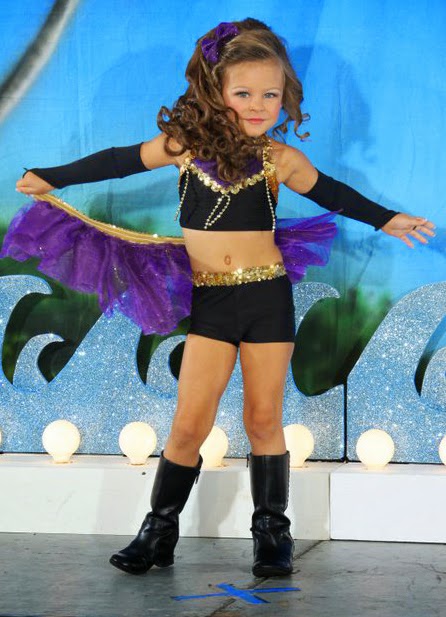 |
| A contestant performing the Rip Off. |
CHIN CHECK
'Chin Check' is a move sometimes done at the front of the runway. Execute a series of 1/4 pivot turns and hold each pose for three seconds, so each judge can view your profile.
The 'Rip Off' move is an all important pageant move and is when part of the costume usually a jacket, cape, scarf or skirt, is removed during the routine and is used as a prop. The Rip Off move is firstly designed to wow the judges by showing that there is another part of the outfit even more amazing underneath, and secondly to show a contestants artistic flare and invention, by the manipulation of the clothing as a prop. It is mostly incorporated into the Western Wear routines, but it is also occasionally used in Pro-am, Modeling and Swimwear too!
Facial Expressions And Gestures
 |
| The Dimples Move. |
Here are some of the more well known pageant facial expressions and gestures that you could included:
'SMILE' or 'PRETTY SMILE' is the most important of all pageant facial expressions and is basically a girl's best brightest smile.
'OOHS AND AAHS' are facial expressions of the sounding of 'Ooh' and 'Aah' which girls perform in a comically exaggerated way to show their fun and sassy side. Oohs and Aahs are often combined with body actions or gestures, such as pointing a finger up to the side of the mouth.
'BLOWING KISSES', is a frequently used gesture performed by little girls at pageants and is very easy to do. Kiss the flat palm of their hand and blow upon it in the direction of the judges.
'SPRINKLES', this is when little girls do a big two handed, blowing kisses gestures, and as they move their arms apart, they wiggle their fingers to imitate twinkling stars.
'WINKING' or 'FLUTTERING' the eyelashes is sometimes performed by girls if they are wearing false eyelashes to draw attention to their beautiful eyes.
 |
| A beautiful little girl doing the Night Night Move. |
'NIGHT NIGHT', is when girls put their flat hands together and rest their face upon them to one side.
'DIMPLES' sometimes referred to as 'Cheeks Cheeks Cheeks' is when girls smile and at the same time, using both their hands, point with their fingers to their cheeks all the while smiling.
'FRAME THE FACE' is when little girls use their forearms to make a frame in front of their face and make cute facial expressions and smile.
'THE TULIP' is a move younger girls sometime do. Put your hands together as if in prayer, then open your hands keeping the wrists together, and place your chin inside them. The hands open 'like a a tulip'.
Making Eye Contact
Making eye contact with the judges is one of the most important pieces of
advice any pageant coach can offer. Your eyes are a big part of portraying an
emotion or a character, so it is important to make eye contact with each judge
at least once every time you’re on stage for at least a few seconds. It sounds
funny but your eye contact should be different in different pageant events. For
example in swimwear you need to show how vibrant and confident you are, so your
eye contact should be more intense (but not to the point of glaring). In
Beauty, you want to portray elegance and confidence. The easiest way to soften
your eye contact for Beauty is to fixate on something for one or two seconds less
than in swimwear. Even when they are announcing the winners, a quick glance to
acknowledge the judges is highly recommended. As a rule you should never look
down in any pageant events unless you are stepping on or off the stage or a
prop etc. Being shy is of course ok, but it is important to make that eye
contact count towards your score, so don’t be scared of making eye contact!
Working With Props
A prop in
pageantry as in any theatrical or modeling terms, is normally defined as an object which is used in conjunction with, and to support and enhance your performance.
 A prop can be anything
such as an umbrella, a black silver topped walking cane, a twirling baton, a
ball, a hoop, a broom, a chair, a basket or bag, a skipping rope, a musical
instrument, a flag, a doll or teddy, an item of clothing such as a hat, jacket,
scarf, or skirt as in the Rip Off move. A prop can even be a large box or cake
that you might emerge from at the start of your routine. It can be almost anything!
However, a prop should always look as if
it's meant to be part of your routine and therefore it should fit in and reflect
the theme of your performance.
A prop can be anything
such as an umbrella, a black silver topped walking cane, a twirling baton, a
ball, a hoop, a broom, a chair, a basket or bag, a skipping rope, a musical
instrument, a flag, a doll or teddy, an item of clothing such as a hat, jacket,
scarf, or skirt as in the Rip Off move. A prop can even be a large box or cake
that you might emerge from at the start of your routine. It can be almost anything!
However, a prop should always look as if
it's meant to be part of your routine and therefore it should fit in and reflect
the theme of your performance.
Working with your
prop is all about showing your skill and dexterity and therefore your
performance should be seamless and appear effortless. It's always a good idea
to use your prop as its intended purpose and also in an artistic way. A walking
cane for example can be used to walk with in a vertical position, - its
intended use; and can also be twirled and manipulated like a baton, - as in an
artistic use. Use your prop as part of the overall routine to give a
performance to show your character and personality. Props are unpredictable, so
you need to show the judges that you can control and manipulate your prop with ease
and confidence. The number one golden rule to remember is to never drop or lose
control of your prop! A prop hurling across the stage and hitting the judge in
the face is not a good idea! So remember when choosing a prop make sure you
choose an object that you can manage and be confident with, but above all make
sure you get in plenty of practice working with your prop before your pageant!
HANDY TIP
Label and bag each item. Sticking with the earrings example, put them in a ziplock bag with all of your other Beauty accessories and write 'BEAUTY' and your name on the bag. Thereby if you should happen to lose your items in the bag or leave them behind after the pageant, once found people will know who it belongs to.
Sportsmanship or Sports-princess-ship!
Sportsmanship is basically defined as: how one 'competes'
and also how one 'reacts to' wining or losing in games and sporting
competitions. Learning how to be a good sport is something every child should be
taught how to do. After all, no one ever wins everything in life, we all fail
at some point and have to learn how to get back up. Beauty pageants are a great
way for girls to learn good sportsmanship. Everyone who enters a pageant wants
it to be a fun experience, and hopefully go home with the winning crown, but of
course there can only be one winner! The
good thing about pageants is that young contestants learn that with hard work
and determination they can earn a trophy and a crown, and when they do, the win
is that much more valuable to them. But sportsmanship isn't just reserved for
the girls taking part. Parents also need to be aware of how they should behave
during pageants and demonstrate good sportsmanship at all times. Good Sportsmanship
is a style and an attitude, and it can have a positive influence on everyone
around you.
GOOD SPORTSMANSHIP / SPORTS-PRINCESS-SHIP
Beauty pageants are not just about looking
physically beautiful, girls need to show their inner beauty by acting beautiful at all times, on and off the
stage! Contestants can do this by being on their best behavior and by showing
Good Sportsmanship! A girl who shows good sportsmanship is always kind, and
respectful towards the other contestants and competes fairly and by the rules.
She respects the judges and their decisions, and is polite to everyone at the
pageant. She is always graceful in defeat by congratulating the winner with a
hug or a handshake. If she is a winner she should always be graceful in
triumph, she never gloats about her winning, or find faults, or belittles the
other contestants. Whether you win or lose it is important to remember that it
is the taking part that counts and that everyone taking part is beautiful!
BAD SPORTSMANSHIP / SPORTS-PRINCESS-SHIP
In pageants, there is nothing more disagreeable
than a beautiful little girl exhibiting poor sportsmanship! These disagreeable
contestants are commonly called: 'Sore Losers'. A Sore Loser's behavior includes: blaming the judges or others for the loss, not accepting
responsibility for personal actions that contributed to their defeat, reacting
to the loss in an immature or improper fashion, making excuses for the defeat,
and citing unfavorable conditions or other petty issues as reasons for the
defeat. Bad Sportsmanship is the ugly side of pageants, it's not only
disagreeable it's down right rude! Therefore it is important to be a good
sportsman and help make the pageant a fun experience for all.
Using Beauty as an example. Think of all the things you’ll need when competing.
Dress
Footwear
Jewellery/accessories
Flipper
Hair piece
Make-up/hair product for any specific style.
Any specific undergarments. (Yes this is important too! If you have a thin dress, you don't want any panty lines showing etc.)
Remember each pageant competition is different, so you may need different items. Therefore always redo a new checklist for each new pageant! Walk yourself through the pageant, from the time you get there, to the time you go home. Even if you think it may not be an important thing to have, write it down anyway. It’s better to be over prepared than under prepared, and you always have the option to rework your checklist before you leave for the pageant.
Creating a Pageant Checklist
When you are at a pageant everything happens so fast. You’re either on stage performing or back stage rushing around changing! The last thing you need is to be hunting around for a missing earring, or worse, finding that your earring has been left at home, therefore it is good idea to create a pageant checklist. Having a checklist handy will help you to remember everything and to be organized. It will help relieve stress and assure you that all of your items are prepared. It will therefore help make the pageant go more smoothly and in turn make it an enjoyable event for you and your mom. When creating your checklist, try to keep it simple as you don't want to be overwhelmed at the pageant. Organize your list by each competition event that you are entering. ie. Beauty, Swimwear, Modeling, etc.Using Beauty as an example. Think of all the things you’ll need when competing.
Dress
Footwear
Jewellery/accessories
Flipper
Hair piece
Make-up/hair product for any specific style.
Any specific undergarments. (Yes this is important too! If you have a thin dress, you don't want any panty lines showing etc.)
Remember each pageant competition is different, so you may need different items. Therefore always redo a new checklist for each new pageant! Walk yourself through the pageant, from the time you get there, to the time you go home. Even if you think it may not be an important thing to have, write it down anyway. It’s better to be over prepared than under prepared, and you always have the option to rework your checklist before you leave for the pageant.
HANDY TIP
Label and bag each item. Sticking with the earrings example, put them in a ziplock bag with all of your other Beauty accessories and write 'BEAUTY' and your name on the bag. Thereby if you should happen to lose your items in the bag or leave them behind after the pageant, once found people will know who it belongs to.
Child Beauty Queens – Before There Were Beauty Pageants
Child Beauty Pageants are a relatively new phenomenon, but the aura associated with child beauty queens has actually existed for well over a hundred years, long before the first ever child beauty pageant.
THE MAY QUEEN
In the British Isles during the early Victorian era the spring custom of 'Crowning the May Queen' changed from crowning a young woman to crowning a girl. In those days almost every village community celebrated May Day (May 1st) with maypole dancing and games etc. The most important May Day tradition was of course choosing the May Queen. The May Queen was usually picked from the most popular and prettiest girls in the school or parish, she would be beautifully dressed in white and be crowned with a crown of flowers, and it was her role to preside over the May Day celebrations. May Day is a long established custom in Europe that can trace its origins back to the ancient spring celebration of 'Beltane' meaning 'Bright Fire' and the Roman flower festival of 'Floralia', which was instituted in Rome in 283BC and was celebrated from April 28th to May 3rd in honor of 'Flora', the goddess of flowers and vegetation.
With the rise of the child May Queen to herald in the spring, there arose at the end of summer her counterpart the 'Harvest Queen'. Once again she would usually be the prettiest girl in the community and like the May Queen she too would be beautifully dressed in a white dress, but instead of a crown of flowers she would wear a yellow sash tied around her waist. The Harvest Queen had the privilege to ride upon the very last cart load of corn gathered in from the fields, known as the ‘Hock Cart’, which was brought home with much music and celebration. In the evening she would preside over the Harvest Home celebrations and have a place of honor at the table during the Harvest Home supper. In some communities her duties included taking an active role in the church Harvest festival service by way of reciting a poem or reading a verse from the bible.
In some southern English counties where growing apples for cider making was done, there saw the emergence of the child 'Wassail Queen'. Wassail comes from the Anglo Saxon and literally means 'be of good health'. The Wassail Queen had an important part to play in the custom of 'Apple Wassailing'. After dark, on Old Twelfth Night (January 17th) she would be led out in procession to the orchard where it was her duty to knock on the trunk of the oldest apple tree, known as the 'Apple Tree Man', and order him to 'awake!' She would be lifted up and she would place toast or cake that had been soaked in cider, in the forks of the branches, while other revellers would pour cider around its roots and over its branches, all to the sound of beating pots and pans and the blowing of horns. Shot guns would then be fired up through the branches and a traditional Wassailing song would be sung by everyone present. Afterwards there would be dancing and festivities. The tradition of Wassailing was done so as to ensure good luck and good health and the hope of a good apple crop in the coming year.
The Christian festival of Whitsun Tide, ‘Whit’ meaning ‘white’, occurs seven weeks after Easter Day and was another opportunity to showcase girlhood beauty. In some parts of Victorian England, it was customary during Whitsun Tide, for the mothers to immaculately dress up their daughters in their finest white clothes and to style their hair to perfection. There were no crowns or winners, but there was real competition among mothers to have their young daughters admired and looking their most beautiful for the Whitsun Tide church service. Whitsun Tide was a time of celebration and commemorates the occasion when the Holy Ghost filled the Apostles with knowledge.
 The Tiara - A History of Sparkle!
The Tiara - A History of Sparkle!
The sparkling jewelled encrusted tiara has long been a symbol of status, glamour and sophistication, therefore it seems appropriate that the tiara has become the ultimate symbol of beauty pageants! Pageant tiaras are of course not made from real diamonds, but from sparkling crystal rhinestones, yet they hold all the same rich symbolism and status equal to any expensive tiara. In recent times pageant tiaras have become ever more elaborate and are by far some of the most lavish and spectacular a girl can win. Every girl who enters a pageant wishes to win and wear a tiara and to take home the crown! Strictly speaking a tiara is not a crown because a crown or coronet goes all the way round where a tiara has a break at the back in the circlet. Crowns and tiaras have been around a very long time and have been worn by Kings and Queens and ruling monarchs since ancient times.
THE DAWN OF THE TIARA
Tiaras actually evolved from the ancient head adornment called a 'diadem', from the Greek word ‘diadein’ which means 'to bind around'. Legend has it that the Greek God, Dionysus invented the diadem, which he made by binding foliage and flowers together into a circlet to wear on his head as a mark of honor. People of course followed suit and wore diadems made of silver and gold for ceremonial occasions. The Ancient Egyptians wore diadems too as some Egyptian mummies have been found wearing them. One belonged to the Princess Khnemt which was made of delicate flowers in gold wire, inlaid with stones.
 DAUGHTERS AND DIADEMS
DAUGHTERS AND DIADEMS
It was the Romans who first started to widely use precious stones to decorate their diadems, and gradually over time these stone embellished diadems began to resemble the tiaras we know today. Roman girls usually married at twelve-years-old and according to custom a bride would wear a diadem over a red veil called a 'flammeum', as a symbolic statement of her love and fertility. The word ‘tiara’ comes from Persian origin, and signifies a high peaked head-dress which Persian Kings wore. Therefore perhaps because of the young Roman bride's appearance with her peaked wedding head-dress, the word tiara became more appropriate and fashionable to use and slowly overtime 'tiara' replaced 'diadem' altogether. Maybe if it had not been for this subtle change of wording the TV show, 'Toddlers and Tiaras' might have been called 'Daughters and Diadems'.
REGAL BEAUTY
Tiaras have been associated with brides since Ancient Rome with their classical, elegant style. And by Medieval times a jewelled tiara for a bride was a symbol of marital state of aristocratic women. These rich ladies and princesses would sometimes use their tiaras like a sort of money bank. If they needed to pay for something they would prise out a jewel in exchange for some goods or services. Tiaras became very popular in the Victorian era when one of Queen Victoria's young female relations wore a veil with a tiara for her wedding.
 Modern tiara wearing was popularised by British Royalty most notably by Lady Diana the Princess of Wales, following her wedding to Prince Charles in 1981. And more recently Miss Catherine Middleton wore the Cartier Halo tiara for her wedding to Prince William in 2011.
Modern tiara wearing was popularised by British Royalty most notably by Lady Diana the Princess of Wales, following her wedding to Prince Charles in 1981. And more recently Miss Catherine Middleton wore the Cartier Halo tiara for her wedding to Prince William in 2011.
FASHION GIRLS
 The Tiara - A History of Sparkle!
The Tiara - A History of Sparkle!The sparkling jewelled encrusted tiara has long been a symbol of status, glamour and sophistication, therefore it seems appropriate that the tiara has become the ultimate symbol of beauty pageants! Pageant tiaras are of course not made from real diamonds, but from sparkling crystal rhinestones, yet they hold all the same rich symbolism and status equal to any expensive tiara. In recent times pageant tiaras have become ever more elaborate and are by far some of the most lavish and spectacular a girl can win. Every girl who enters a pageant wishes to win and wear a tiara and to take home the crown! Strictly speaking a tiara is not a crown because a crown or coronet goes all the way round where a tiara has a break at the back in the circlet. Crowns and tiaras have been around a very long time and have been worn by Kings and Queens and ruling monarchs since ancient times.
THE DAWN OF THE TIARA
Tiaras actually evolved from the ancient head adornment called a 'diadem', from the Greek word ‘diadein’ which means 'to bind around'. Legend has it that the Greek God, Dionysus invented the diadem, which he made by binding foliage and flowers together into a circlet to wear on his head as a mark of honor. People of course followed suit and wore diadems made of silver and gold for ceremonial occasions. The Ancient Egyptians wore diadems too as some Egyptian mummies have been found wearing them. One belonged to the Princess Khnemt which was made of delicate flowers in gold wire, inlaid with stones.
 DAUGHTERS AND DIADEMS
DAUGHTERS AND DIADEMSIt was the Romans who first started to widely use precious stones to decorate their diadems, and gradually over time these stone embellished diadems began to resemble the tiaras we know today. Roman girls usually married at twelve-years-old and according to custom a bride would wear a diadem over a red veil called a 'flammeum', as a symbolic statement of her love and fertility. The word ‘tiara’ comes from Persian origin, and signifies a high peaked head-dress which Persian Kings wore. Therefore perhaps because of the young Roman bride's appearance with her peaked wedding head-dress, the word tiara became more appropriate and fashionable to use and slowly overtime 'tiara' replaced 'diadem' altogether. Maybe if it had not been for this subtle change of wording the TV show, 'Toddlers and Tiaras' might have been called 'Daughters and Diadems'.
REGAL BEAUTY
Tiaras have been associated with brides since Ancient Rome with their classical, elegant style. And by Medieval times a jewelled tiara for a bride was a symbol of marital state of aristocratic women. These rich ladies and princesses would sometimes use their tiaras like a sort of money bank. If they needed to pay for something they would prise out a jewel in exchange for some goods or services. Tiaras became very popular in the Victorian era when one of Queen Victoria's young female relations wore a veil with a tiara for her wedding.
 Modern tiara wearing was popularised by British Royalty most notably by Lady Diana the Princess of Wales, following her wedding to Prince Charles in 1981. And more recently Miss Catherine Middleton wore the Cartier Halo tiara for her wedding to Prince William in 2011.
Modern tiara wearing was popularised by British Royalty most notably by Lady Diana the Princess of Wales, following her wedding to Prince Charles in 1981. And more recently Miss Catherine Middleton wore the Cartier Halo tiara for her wedding to Prince William in 2011.
Throughout history tiaras have and continue to inspired a great fascination. The most beautiful and influential women and girls have been painted, photographed and admired whilst wearing them. Today they are still worn and continue to inspire a special poise and elegance and therefore will always remain the ultimate symbol of beauty pageants.
Our views of physical beauty come mostly from the ancient Romans, who incidentally adopted some of their beauty practices from the ancient Greeks and Egyptians. The Romans felt that the 'preservation of beauty' was acceptable and not 'unnatural' and therefore it became an important part of civilized culture for women and girls of high status to beautify themselves. Pure white skin was a feature of Roman beauty, so just like their mothers, girls would after their baths apply a dusting of face powder made from chalk. The Romans considered head hair to be a ones crown and glory! Roman girls would style and adorn their hair with flowers and hair jewellery. Body hair on the other hand was considered unattractive and repulsive, and any sign of follicle growth would be immediately plucked out as soon as it appeared. The ideal eyes, from the Roman perspective, were large with long eyelashes. Girls would apply blue or green eye shadow made from azurite (blue) or poisonous malachite (green) to accentuate their eyes. Sometimes Roman girls would lightly use a pink rouge made from red ochre or poisonous cinnabar to slightly blush their cheeks. There is no evidence that Roman women or girls colored their lips, yet there is some evidence to support the belief that Romans may have painted their nails with a red dye imported via trade routes from India. To complete the well bred, young Roman girls' beauty, she would wear a toga and adorn herself with a charm ivory necklace and bracelet, and lastly apply a generous amount of purfume.
FASHION GIRLS
From ancient Roman times right up until the mid Victorian era there was no such distinction between adult and children's clothing and as such children were clothed according to their station in life, looking like miniatures of their parents. Children's clothing and beauty corresponded exactly to the world of adult fashion, right down to the last detail. Young girls would put on jewelry, have their hair styled, and wear beautiful dresses with silk and lace bodices, bustles, crinolines, corsets, and even stockings held up by garters and suspenders.
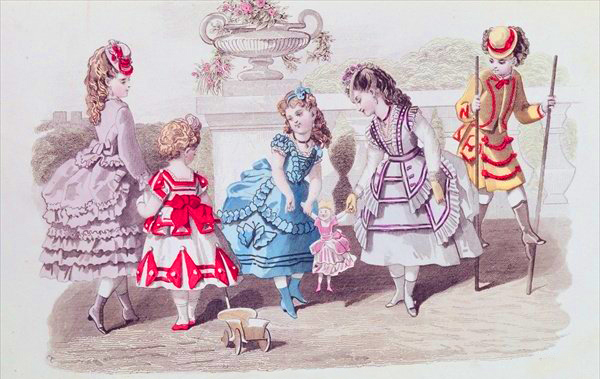 |
| Even in the past young girls would dress to impress in the latest fashions of the time |
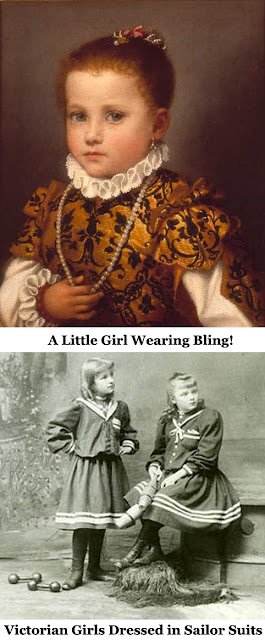 FOLLOWERS OF FASHION
FOLLOWERS OF FASHION
Oil paintings from of the past show young girls dressed in their finest elaborate dresses wearing layer upon layer of fancy silk and lace as in this painting of a fashionable little girl by Renaissance master Giovanni Battista Moroni. Note her bling! She has a pierced earring, a pearl necklace and pearl hair accessory. However, girls from poorer backgrounds did not have such luxuries and therefore, wore simpler clothes of rougher fabric, including wool, cotton and linen, or well worn hand me downs.
Around the mid Victorian era little girls fashion began to take on a style all its own, with long waisted dresses that hung out over a false pleated skirt. Later saw the emergence of the sailor suit followed by the much later pleated school uniform. About this time attitudes towards children began to change and with them came everything to do with childhood fashion.
The popularity of Hollywood accelerated the pace of change when in the 1930's child mega star Shirley Temple appeared in movies wearing her cute mini dresses. In no time at all, little girls everywhere wanted to look like their screen idol and follow in her style. The young Shirley Temple became the first child icon to have her own range of dresses and clothing made as fashion tailored especially for her young girl fan base, which sold in there millions. However, Shirley Temple is only partly to credit for the iconic mini dresses popularity! Hemlines had been steadily increasing since the mid 1920's when cotton
production was greatly reduced by the boll weevil, this and The Great Depression of the 1930's compounded negative affects on the textile industry causing a shortage of
fabric and prices escalated. The outcome of this was that hemlines became shorter to compensate and underwear too got shorter to match the
length of the hemline. Also in a time when malnutrition and rickets, (a disease
affecting the growth of bones caused by the lack of Vitamin D) was particular
common in children, the understanding of the health benefits of sunlight on
skin therefore made the short dress and short trousers/pants for boys a more healthy
acceptable option.
The 1940's lengthened the skirts slightly but shortages of fabric particularly in UK/Europe during the Nazi blockade of World War II kept them generally short for girls. It was not until the boom years of the 1950's and when rationing ended that girls skirts became long, generally knee or just above the knee. The Advent of the Rock and Roll years saw the A line flared skirt of the Bobby Soxer which became all the rage for teens. Then in the 1960's and early 70's it became fashionable once again for girls to adopt the short mini-dress/skirt style. The micro skirt; a very short miniskirt that has the hemline at crouch level or above briefly became all the rage. Along with the miniskirt came the Midi and Maxi skirts. Midis are skirts with a hemline midway just above or below the knee, Maxi skirts are long flowing skirts that have hemlines at the ankle and were popular for older teens and women during the flower-power hippy era. Hot Pants, (very short shorts) became very popular for girls in the 1970's. Hot pants styles had been around since the 1930's but were mainly worn for sports recreation, where Hot Pants of the 1970's were much more main stream and shorter than the retro style being made of various fabrics such as denim, cotton and velvet. When Disco music hit the scene during the 1970's it brought with it flared trousers/pants. Then in the 1980's the rise of girls hemlines became fashionable once again with the introduction of the multi layer Rah-Rah skirt. The puffball skirt too made its brief appearance on the high street but unlike the Rah-Rah it did not have the style or charm that young girls desired. Young girls fashion has continued with ebbs and flows of various differing styles, mixing the old with the new, with everything from slogan t-shirts and jeans to crop tops and leggings, and continues to be a multi billion dollar industry it is today.
The 1940's lengthened the skirts slightly but shortages of fabric particularly in UK/Europe during the Nazi blockade of World War II kept them generally short for girls. It was not until the boom years of the 1950's and when rationing ended that girls skirts became long, generally knee or just above the knee. The Advent of the Rock and Roll years saw the A line flared skirt of the Bobby Soxer which became all the rage for teens. Then in the 1960's and early 70's it became fashionable once again for girls to adopt the short mini-dress/skirt style. The micro skirt; a very short miniskirt that has the hemline at crouch level or above briefly became all the rage. Along with the miniskirt came the Midi and Maxi skirts. Midis are skirts with a hemline midway just above or below the knee, Maxi skirts are long flowing skirts that have hemlines at the ankle and were popular for older teens and women during the flower-power hippy era. Hot Pants, (very short shorts) became very popular for girls in the 1970's. Hot pants styles had been around since the 1930's but were mainly worn for sports recreation, where Hot Pants of the 1970's were much more main stream and shorter than the retro style being made of various fabrics such as denim, cotton and velvet. When Disco music hit the scene during the 1970's it brought with it flared trousers/pants. Then in the 1980's the rise of girls hemlines became fashionable once again with the introduction of the multi layer Rah-Rah skirt. The puffball skirt too made its brief appearance on the high street but unlike the Rah-Rah it did not have the style or charm that young girls desired. Young girls fashion has continued with ebbs and flows of various differing styles, mixing the old with the new, with everything from slogan t-shirts and jeans to crop tops and leggings, and continues to be a multi billion dollar industry it is today.
 |
Shirley Temple was the world's greatest child star ever! Before the age of 12 she had stared in 22 full lengh movies and many short films. She was a truly talented entertainer and actress, and she sang and tap danced her way through Hollywood into fame and fortune. Shirley Temple was and still continues to be an inspiration to little girls everywhere who love to sing, dance, act and model.
You can find out more about this amazing talented girl on the Shirley Temple Tribute page. |
Beauty Superstitions
It is an established fact that girls of all ages and from all backgrounds have always wanted to look beautiful. Ever since Roman times girls would put on beautiful clothes, style their hair and apply cosmetics. Sometimes girls that 'really wanted' to be beautiful and keep their youthful good looks would result to age old superstitions and old wives tales in an attempt to capture everlasting beauty!
MAY DEW
The sparkling dew of May Day (May 1st) was once believed to have magical beautifying properties! In the past young girls would rise early on May Day morning and rush out into the fields and wash in the dew in the hope that it would improve their complexions and give them eternal youthfulness. As one old rhyme says:
The fair maid* who on the first of May
Goes to the fields at the break of day
And washes in dew from the Hawthorne tree
Will ever after beautiful be!
*girl
Such was the belief in the May dew's magical properties, that some girls would even collect it in bottles and use it as their beauty elixir throughout the year.
FAIRYRINGS
The toadstool circles often found in the grass, better known as fairyrings, were also credited with the same beautifying magic as May dew. Such toadstool rings were once believed to be brought about by fairies dancing in circles on moonlit nights. The best times to wash or collect fairyring dew was said to be at midnight on Midsummer Eve (June 23rd) and at Halloween (October 31st) for it was then that the magic was said to be most potent. Wise country girls kept clear of fairyrings in fear that they would become enchanted and thus spirited away by the fairies. However, those girls brave enough to risk it and try out the beauty treatment were warned on no account should they step inside the fairyring to wash, or the fairy magic would have the opposite effect and they would grow to be ugly!
CURES FOR THINGS THAT GO BUMP IN THE NIGHT
Having clear unblemished skin has always been a key trait of youthful beauty. Girls in their teenage years know all to well the problem associated with spots and blackheads and these days it is common practise for girls to treat any troublesome flare-ups with medicated ointments or face cleansers. But how many girls today spare a thought for their predecessors when there wasn't any clinically tested medical treatments. In the past girls had only soap and water to keep their face clean and if a girl was unlucky enough to be plagued by overnight spotty eruptions she might if she could obtain some, wash herself with unpleasant sulphur which rarely was effective. So often was the case that a girl would just have to grin and bear it and put up with her annoying 'disfigurements'. Those girls who were particularly afflicted by spots and boils would when all else had failed result to old wives tales and superstitions in the hope of a miracle cure. One such 'spot cure' was for the girl to locate a bramble bush which forms a natural arch and on a sunny day crawl backwards and forwards under it three times going as nearly east to west as possible. If this did not scratch her and tear her clothes she could expect her spots to fade and disappear within days. According to tradition, the bramble is one of several plants, of which the Crown of Thorns of Jesus is said to have been made and therefore it was believed to have the power to cure minor diseases including warts. One remedy to cure a bad case of warts was for the afflicted person on the night of the full moon to pass a silver coin over the wart and at midnight bury a piece of meat under a bramble bush. It was believed that as the moon waned and the meat rotted so would the warts.
Show your support for Pageants!
Pageants are a lot of fun and are a great way to show your cat-walking skills and talent. If you love competing in beauty pageants, or just enjoy watching them on TV shows like Toddlers and Tiaras, you can now show your support by copying the 'Pageants Rock' heart design and pasting it into your web page or in your emails etc!
.....*...............*
...*....................*
..*......................*
.*........................*... ......*....*
*.........................*... *..............*
.*.........................*.. .................*
..*.........................*. ...............*
...*… PAGEANTS ROCK!!...*
.....*........................ ..........*
........*..................... ......*
...........*.................. ....*
...............*.............. .*
..................*..........*
.....................*.....*
......................*..*
........................*
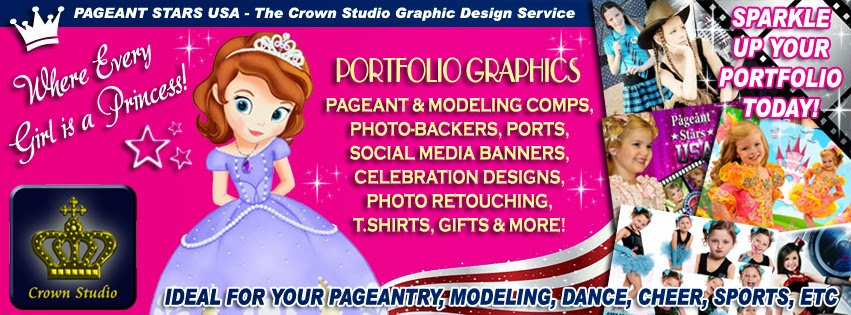 |
| Click HERE to find out how you can order your portfolio graphics from The Crown Studio! |






